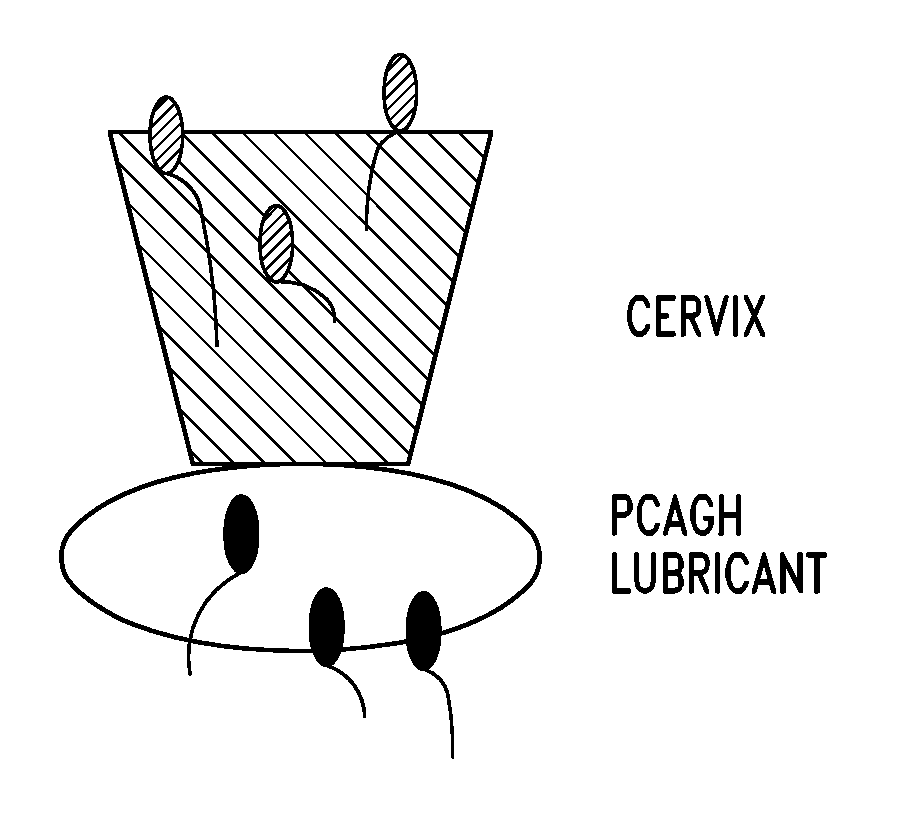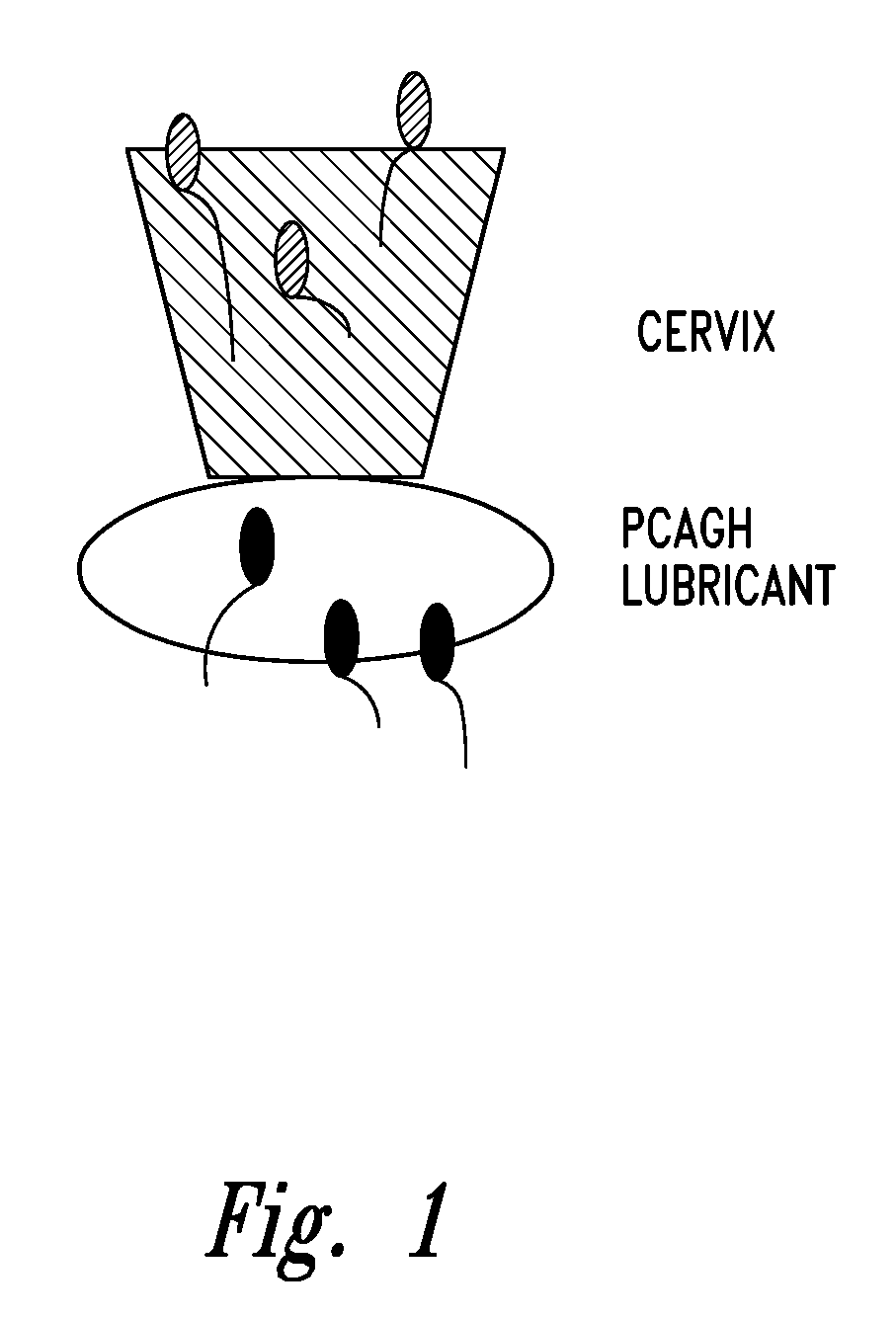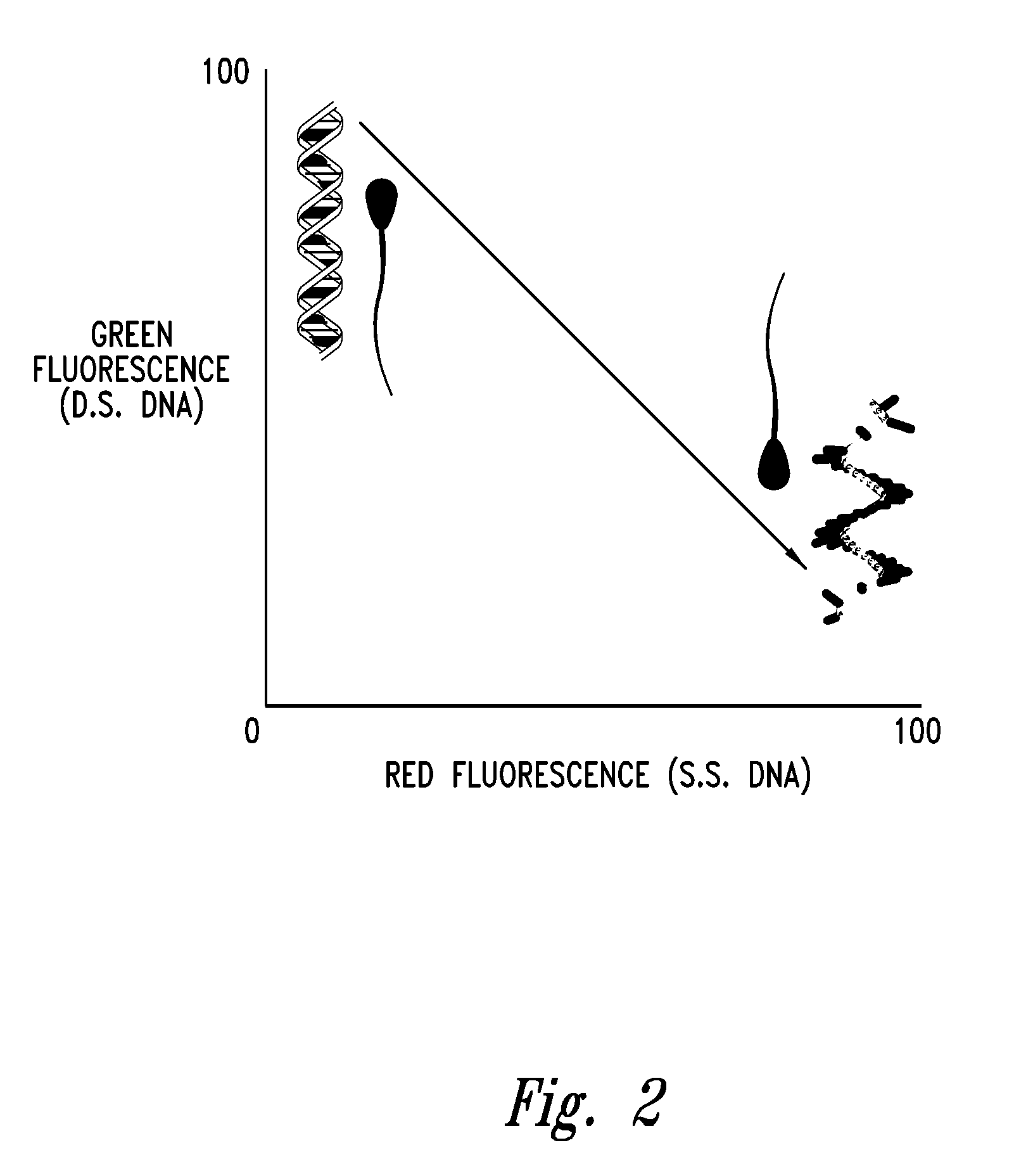Methods and compositions to improve germ cell and embryo survival and function
a technology of germ cell and embryo survival, applied in the direction of drug compositions, biocide, sugar derivates, etc., can solve the problems of oocytes and embryos oocytes and embryos also showing significant disruption of function, and sugars and proteins in seminal plasma can be toxic to sperm cells, etc., to improve the function of germ cells
- Summary
- Abstract
- Description
- Claims
- Application Information
AI Technical Summary
Benefits of technology
Problems solved by technology
Method used
Image
Examples
example 1
Media for Sperm Isolations and Culture
[0092]Sperm function assays such as sperm motility, viability and functional membrane health (HOS) are used to determine and / or compare the biological activity of a PCAGH. Sperm samples from a male donor are obtained either from a fresh ejaculate of raw semen or a refrigerated or frozen sample processed by washing or extending as described herein. Basal medium is used throughout as follows: glucose-free TALP (Table 1) is prepared for bovine sperm, TALP supplemented with glucose (5 mM glucose) is prepared for other animal species, and human tubal fluid (HTF) from a powder mix or from a recipe (Table 2) is prepared for separation of human sperm. To the base medium, PCAGH is added, such as 0.05% pectin, 0.1% galacturonic acid, 0.5% arabic acid or 0.05% gum arabic. The medium is then filtered through a 0.2μ filter.
TABLE 1GLUCOSE FREE TALPIngredientg / 500 mlNaCl2.922KCl0.1156NaHCO31.0500NaH2PO4H2O0.0200Na Lactate (60% syrup)1841μlCaCl2•2H2O0.1546MgCl•...
example 2
Sperm Functional Assays
[0093]Sperm Count in a Suspension. Sperm cells are suspended in culture medium or a freezing medium. Numbers in a suspension are counted either manually using a hemocytometer or Makler, or by an automated Coulter counter system, a spectrophotometer, or a computer assisted semen analyzer (CASA). For example, 6 μl of sperm suspension are placed on a Makler chamber (Fertility Technologies, Natick, Mass.). The number of sperm counted in 10 squares is equivalent to the number of sperm / ml in the original suspension. Appropriate dilutions are made so that at least 100 sperm are counted.
[0094]Sperm Morphology. Sperm morphology or shape is determined by smearing a 10 μl aliquot of sperm sample at approximately 25×106 cells / ml onto a slide and staining with a differential stain such as Wright Giemsa at 0.1% (w / v), for 30 minutes. Sperm are then observed under a microscope and categorized as to normal or abnormal shapes (morphology); (Kruger et al., Urology 30:248, 1987)...
example 3
Methods to Determine Sperm Function
[0108]Samples containing sperm are incubated at 37° C. (human) or 39° C. (animal) in 5% CO2 and humidified air. At various timed intervals, sperm survival rate, motility characteristics, functional membrane health and membrane lipid peroxidation levels are determined as described in Example 2. Sperm cultured with a variety of PCAGHs (galacturonic acid, gum guar, galactopyranosylarabinose, gum karaya and gum locust bean) show superior sperm motility throughout a 24-hr culture period compared to sperm cultured in the monomeric sugar units of arabinose and galactose or in control medium with no polysaccharides (Table 3). In this same example, sperm show superior functional membrane health as determined by HOS testing (FIG. 3) and reduced levels of membrane lipid peroxidation (FIG. 4). Furthermore, sperm cultured in pectin, gum ghatti, gum arabic, arabic acid, and arabinogalactan show superior sperm motility characteristics of percent motility and forw...
PUM
| Property | Measurement | Unit |
|---|---|---|
| molecular mass | aaaaa | aaaaa |
| pH | aaaaa | aaaaa |
| time | aaaaa | aaaaa |
Abstract
Description
Claims
Application Information
 Login to View More
Login to View More - R&D
- Intellectual Property
- Life Sciences
- Materials
- Tech Scout
- Unparalleled Data Quality
- Higher Quality Content
- 60% Fewer Hallucinations
Browse by: Latest US Patents, China's latest patents, Technical Efficacy Thesaurus, Application Domain, Technology Topic, Popular Technical Reports.
© 2025 PatSnap. All rights reserved.Legal|Privacy policy|Modern Slavery Act Transparency Statement|Sitemap|About US| Contact US: help@patsnap.com



